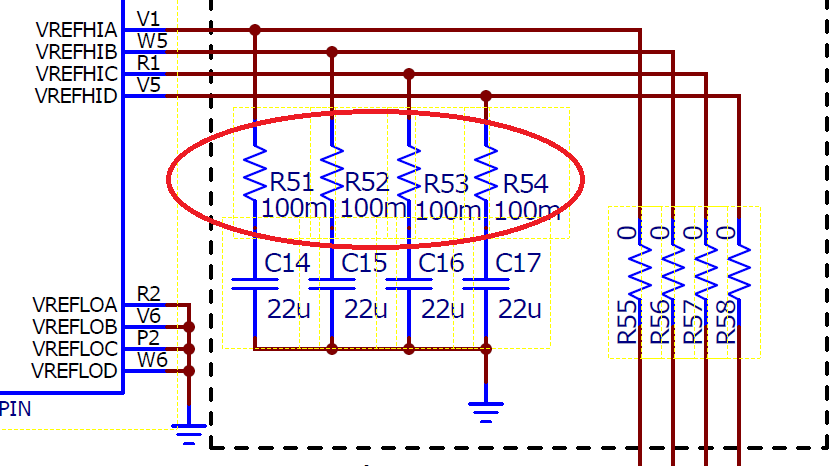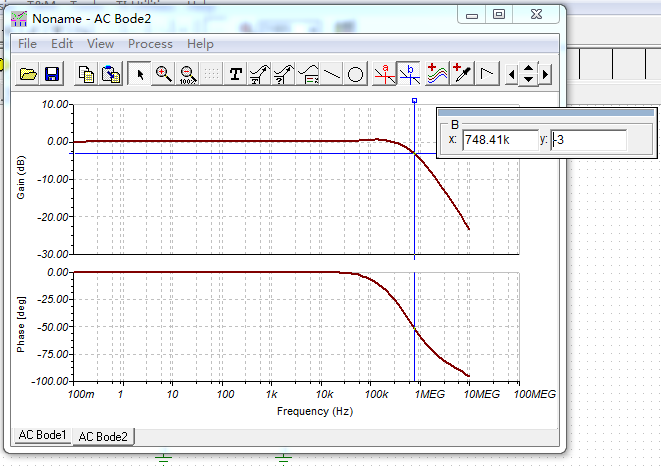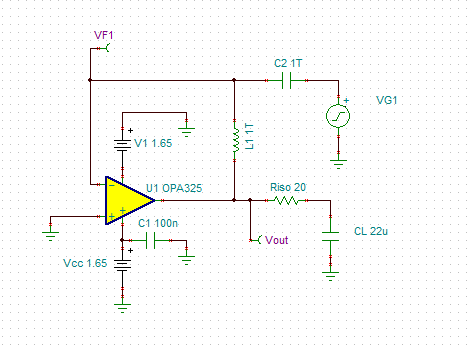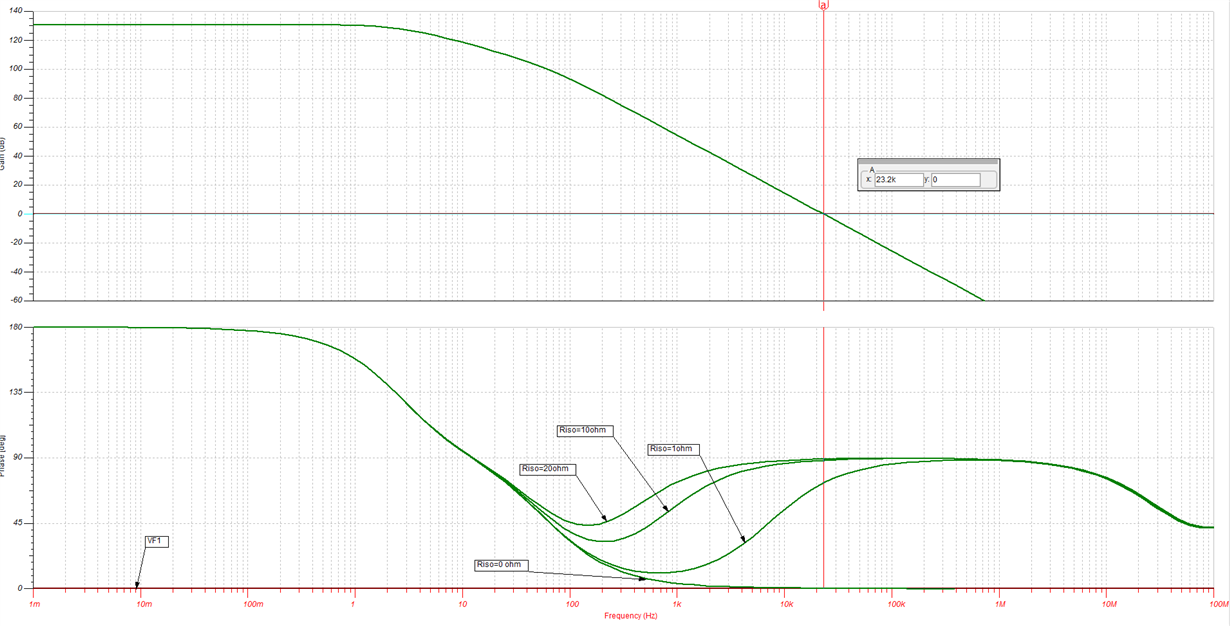Other Parts Discussed in Thread: OPA4350, OPA4353, OPA325, TINA-TI
I used LMV344 to build the following circuit as a buffer for the 28377 reference voltage source, replacing the control CARD reference design OPA4350EA. The circuit produced dozens of sets without problems until recently, when new batches of devices were used, the problems were exposed.
The following is my own schematic diagram.
I think there are two problems with my circuit diagram.
1.LMV344 input is not rail to rail.NOT in to V+.SO The input voltage should not be 3V.
2.Output can not drive so large capacitive load.
I urgently need your help.Answer me the following questions.
1.Which parameters is the operational amplifier's, we can know LMV344 CAN NOT IN to V+?
2.Which parameters is the operational amplifier's parameters, we can know LMV344 CAN drive how much Capacitance VALUE and we can know how much resistance VALUE (R51)is need between capacitor and op amp output pins(R51~R54)?
3.Can you recommend a chip that is fully compatible (pin to pin)with LMV344 to realize the function of the VREF circuit? It would be better if you could tell me the resistance VALUE between the output pins and capacitors.
Thank you for looking forward to your reply.








